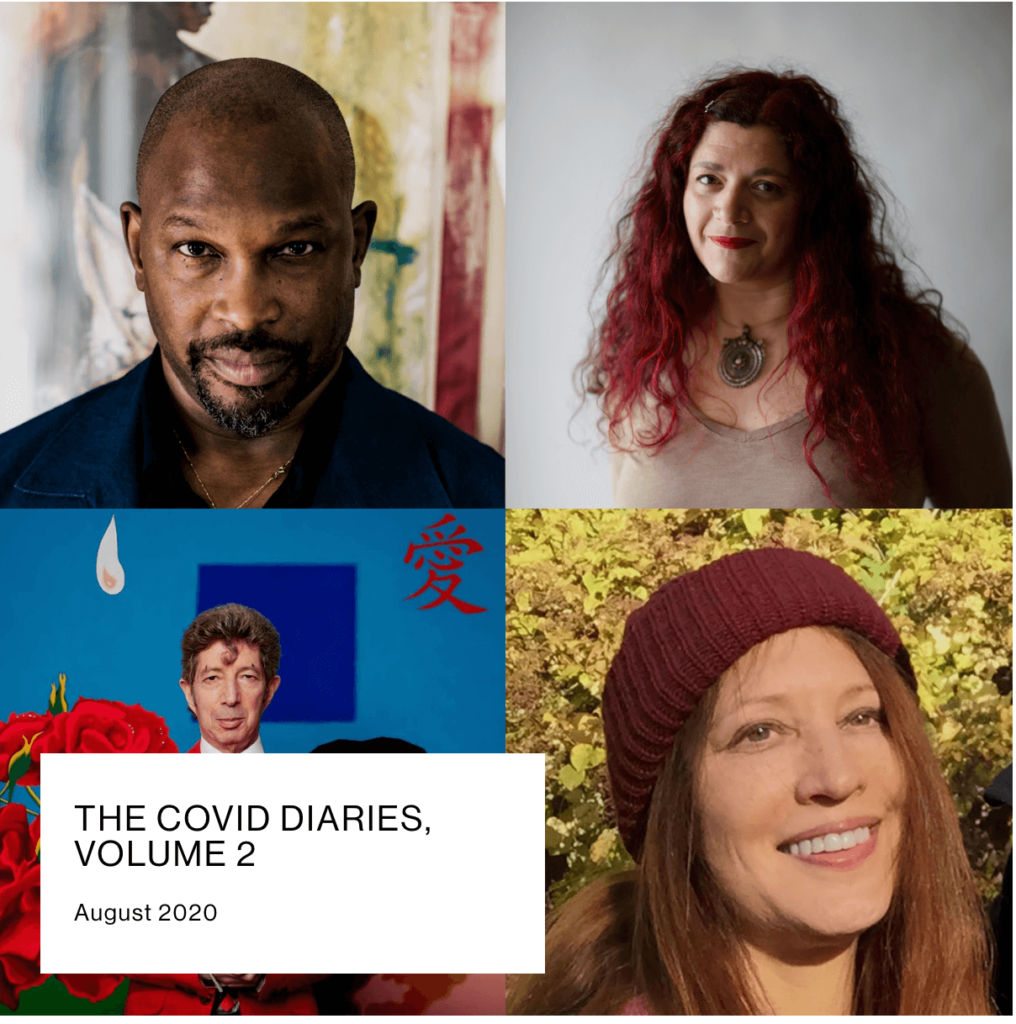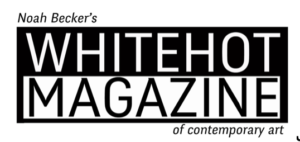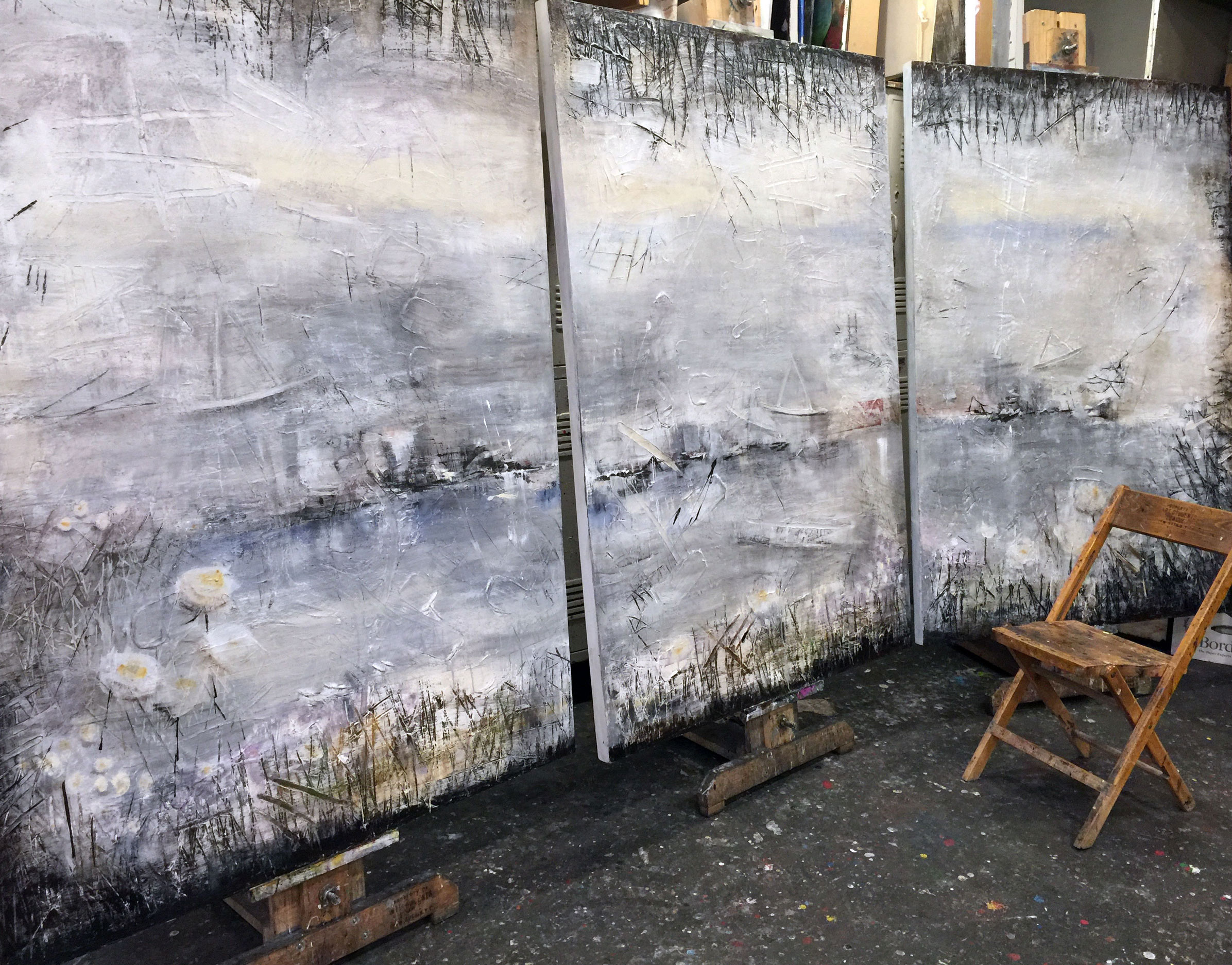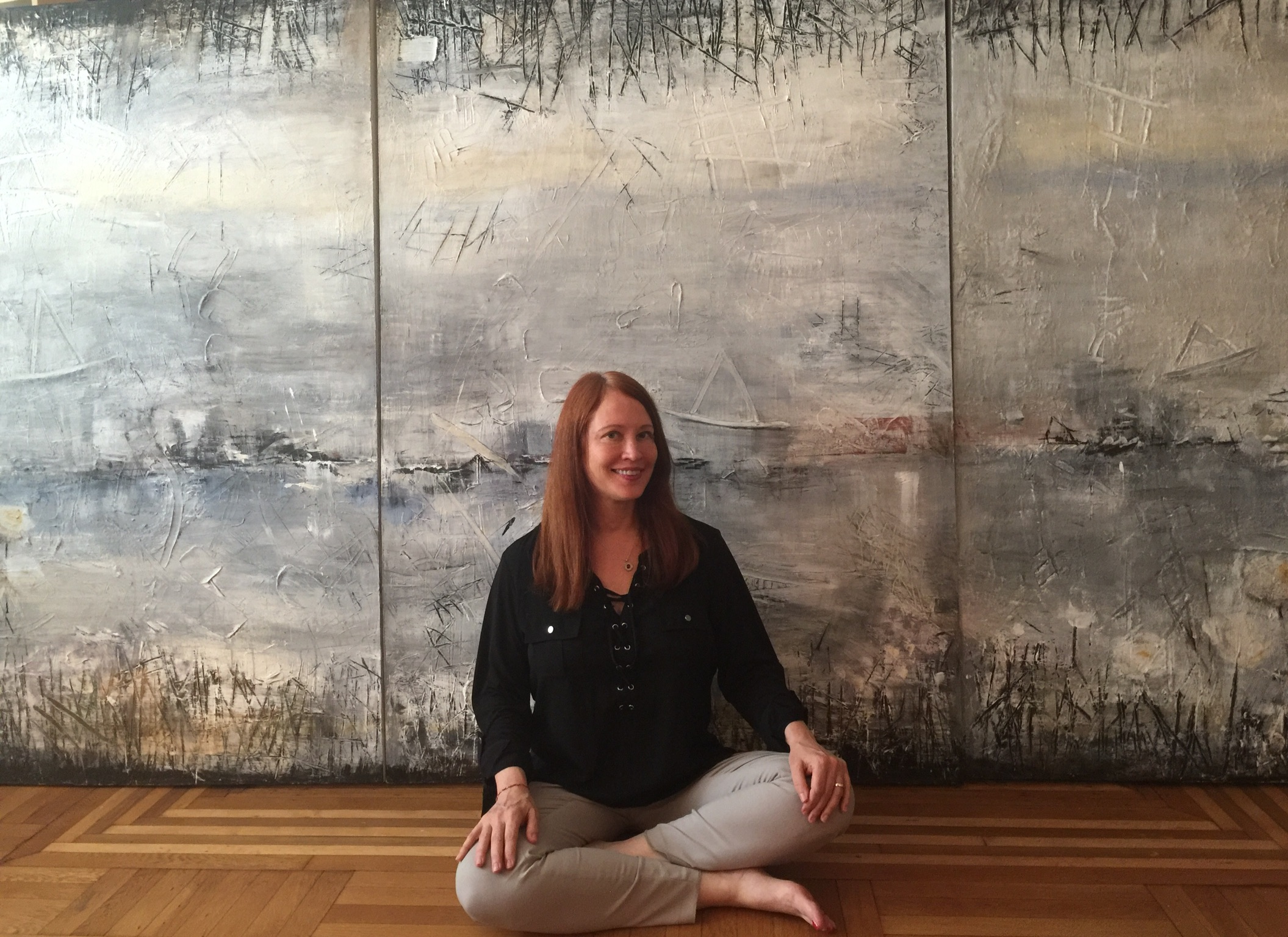NEWS

Clockwise from top left: Chaz Guest, Silvina Der Meguerditchian, Susan Woldman, Duggie Fields
Curator.Site
The COVID Diaries, Volume 2 brings together four very different artists from around the world to voice unique perspectives on art and the ability to overcome challenges through their work. From Duggie Fields, who has found hope in his work while fighting cancer, to Silvina Der Meguerditchian who has built a career on focusing on the hardships of belonging and identity, to Susan Woldman who stayed in her New York apartment though the pandemic to find a prolific artistic space, to Chaz Guest, an artist blending paint and racial truth during the civil unrest in the summer of 2020. Each is a different artist, but like all of us, they are trying to navigate these new challenges.
Susan Woldman, a New York City-based artist, brings her sensibility as a sculptor into her paintings. Thickly textured impasto surfaces combine with landscape imagery to create depth, movement, and light. Inspired by form rather than color, Woldman always begins with texture, digging her hands into a thick gel medium to create marks and symbols on the canvas before she paints. The recent recipient ofthe Kuniyoshi Painting Grant, Susan has studied at The Art Students League, received her MFA from the School of Visual Arts in NYC, studied sculpture in Lacoste, France, and received her BA from Sarah Lawrence College. Susan has exhibited extensively over the years in New York City and throughout the United States.
 JUNE 2019
JUNE 2019
“THE BEST ART IN THE WORLD”
Artist Susan Woldman Elfer Wins Kuniyoshi Grant
Kuniyoshi Grant winner Susan Woldman with painting.
By WM, June 2019
“The most important guideline for me when I paint is to not second guess myself. Everybody has an opinion. Luckily this time around opinions fell in my favor. I am very honored to receive the Kuniyoshi Grant. It feels really good,” writes artist Susan Woldman, recent recipient of the Kuniyoshi Grant funded by the Sara & Yasuo Kuniyoshi Foundation. Yasuo Kuniyoshi, a Japanese-American painter whose work has been honored notably by The Whitney and Smithsonian, blended blended Western and Eastern styles of artmaking in his practice. In Woldman’s work, in her own words: “I bring my sensibility as a sculptor into these recent paintings. Thick textured impasto surfaces combine with landscape imagery to create depth, movement and light. This series is inspired by form rather than color. By limiting myself to a mostly black and white palette I’m able to more freely explore the dynamic of space and how elements of the painting relate to each other. It’s a great challenge because I often rely on color when I don’t know where to go. In these paintings my focus is to resolve the image through light and reflection. I paint on wood because I’m a sculptor at heart and scratching marks on the surface gives me the feeling that I’m building something. My favorite painting is always the one I’m working on at the time.”
Susan Woldman Elfer received her BA Degree from Sarah Lawrence College. After studying sculpture in Lacoste, France through the Cleveland Institute of Art she went on to get her MFA at the School of Visual Arts in New York City where she has lived for the past thirty years. WM

Susan Woldman Elfer, view of Triptych in progress, 68” x 144” (three panels) Acrylic paint, gel medium on wood panels
Susan Woldman Elfer
Current Work
Dec 19, 2017 – Feb 1, 2018, The Narthex Gallery, Saint Peter’s Church
619 Lexington Avenue (54th Street), New York, NY 10022
By NOAH BECKER, JAN. 2018
“The attitude that nature is chaotic and that the artist puts order into it is a very absurd point of view, I think. All that we can hope for is to put some order into ourselves.” -Willem De Kooning, 1950
“I grew up in a forest. It’s like a room. It’s protected. Like a cathedral… it is a place between heaven and earth.” – Anselm Kiefer
“I fell in love with black; it contained all color. It wasn’t a negation of color… Black is the most aristocratic color of all… You can be quiet, and it contains the whole thing.” – Louise Nevelson
Susan Woldman’s work at the Narthex Gallery in New York City’s Saint Peter’s Church is a dazzling group of paintings. The church environment at Saint Peter’s as an exhibition space, resonates with the history of such places. In terms of her influences, she is influenced by sculptors such as Louise Nevelson, “I love Louise Nevelson, she’s an artist who creates something out of nothing just by re-arranging things that already exist,” Woldman says.
Woldman is also acutely aware of the history of St. Peters Church in regards to Nevelson, “The chapel Louise Nevelson designed is in the same church as my exhibit and I’ve been sitting quietly in there enveloped by her creativity,” Woldman explains. Woldman’s influences also connect with the history of old paintings, “I love J.M.W. Turner. I know, he’s a painter not a sculptor, but I feel such depth and dance in his paint strokes,” she says.
Ruminating on these influences has obviously infused her paintings with a stark sense of tonality, surface and texture. Texture and the sculptural aspect in Woldman’s paintings was something I saw right away and it’s also one of the things I like most about art – painting that is influenced by other art forms. That sense of experimentation and jumping between mediums – so enjoyable with this kind of painting.
Woldman’s paintings suggest landscapes, and other than Turner, I was curious where these landscapes were derived from? “I’ve lived in Manhattan for most of my life so painting these abstract landscapes takes me out of a crowded city. It’s my car ride through the countryside,” she says.
History shows a strong connection between the natural world and abstraction. Early Ellsworth Kelly leaf drawings and Kelly dreaming into window forms are visions of holy light in nature and nature’s forms. This kind of visual escapism is important in an environment like New York City where an art dealer friend once said to me, “If you want reality, take the L train.”
But making this kind of work is an intuitive experience as is Woldman’s way of working. “I’ve been asked to draw a sketch of what a painting will look like in advance and that’s more challenging to me than doing income taxes – “I work best intuitively,” She says. Woldman lets the excitement of the brush and the movement that happens to propel her through a piece. Much like any of the predominantly male Ab-Ex painters of the past, Woldman creates a much-needed virtuostic moment in painting. But the epic hyper-masculine high-key work of white male artists that once dominated art history, seems like a faint dream-memory in relation to the now ailing white machismo hero in art.
 Susan Woldman Elfer, Diptych Rise, 2017, 36” x 96” (two panels) Acrylic paint, gel medium on wood panels
Susan Woldman Elfer, Diptych Rise, 2017, 36” x 96” (two panels) Acrylic paint, gel medium on wood panels
Woldman’s use of color in her compositions is sparing – she is drawn to black and white, finding expression in that way, “A decade ago if you handed me only two tubes of paint – black and white, I would have been extremely frustrated and thought you were very mean. Now black and white sends me over the moon,” she says.
Woldman works with internal light and the light within an image as opposed to chiaroscuro or lighting and color effects on objects or figures. Color can be dangerous and I appreciate the power of monochromatic paintings that suggest color. “I love color, but noticed that color had become a ‘cheat sheet’ for me,” Woldman says. “I’m aware of a light source in that I try to follow the light and shadow in some reasonable way – but I’m not bound to that. Where I place shadow doesn’t always move in the same direction. I do believe there exists a center of light,” she says.
Woldman is a sculptor at heart and this is evidenced in the paintings. “I paint only on wood because I’m a sculptor at heart and scratching marks in the surface of these paintings give me the feeling that I’m building something.” WM
Noah Becker for WHITEHOT MAGAZINE



